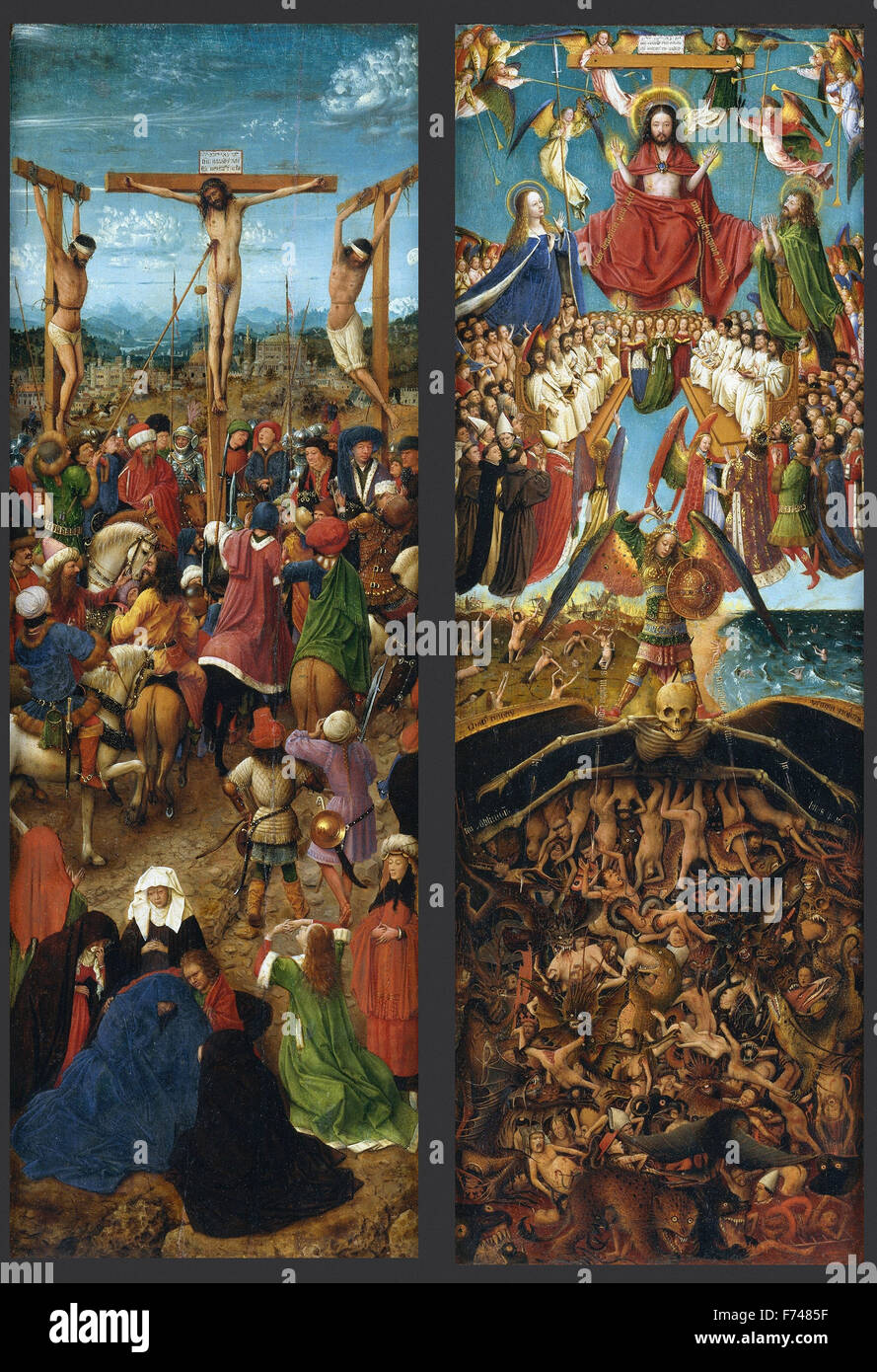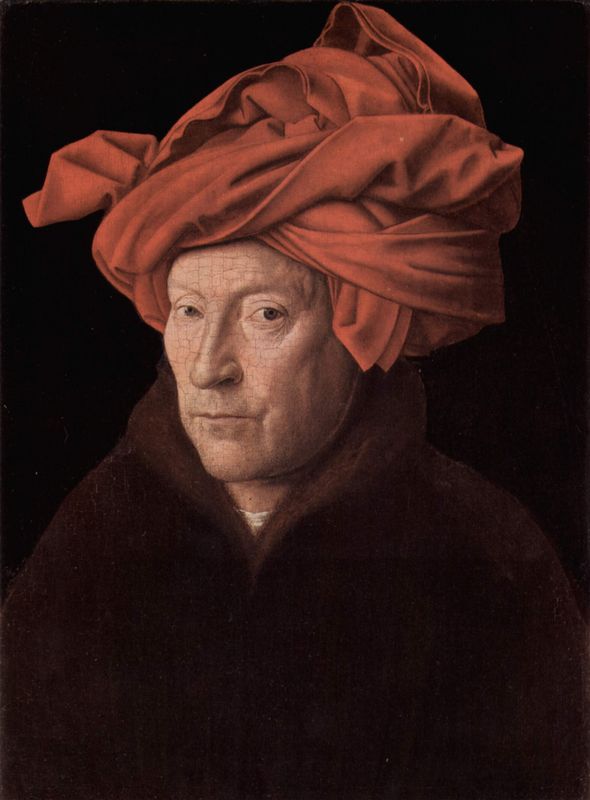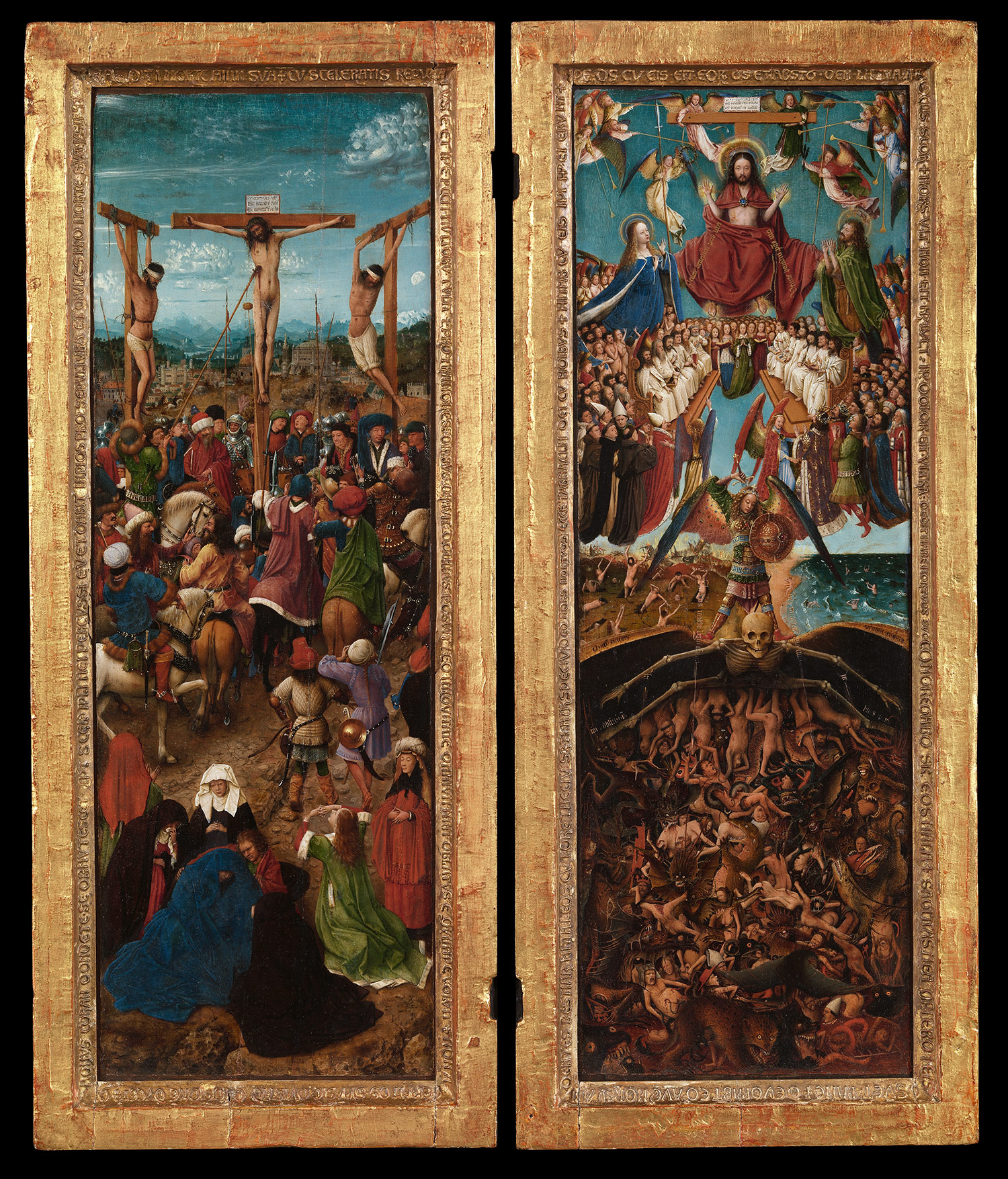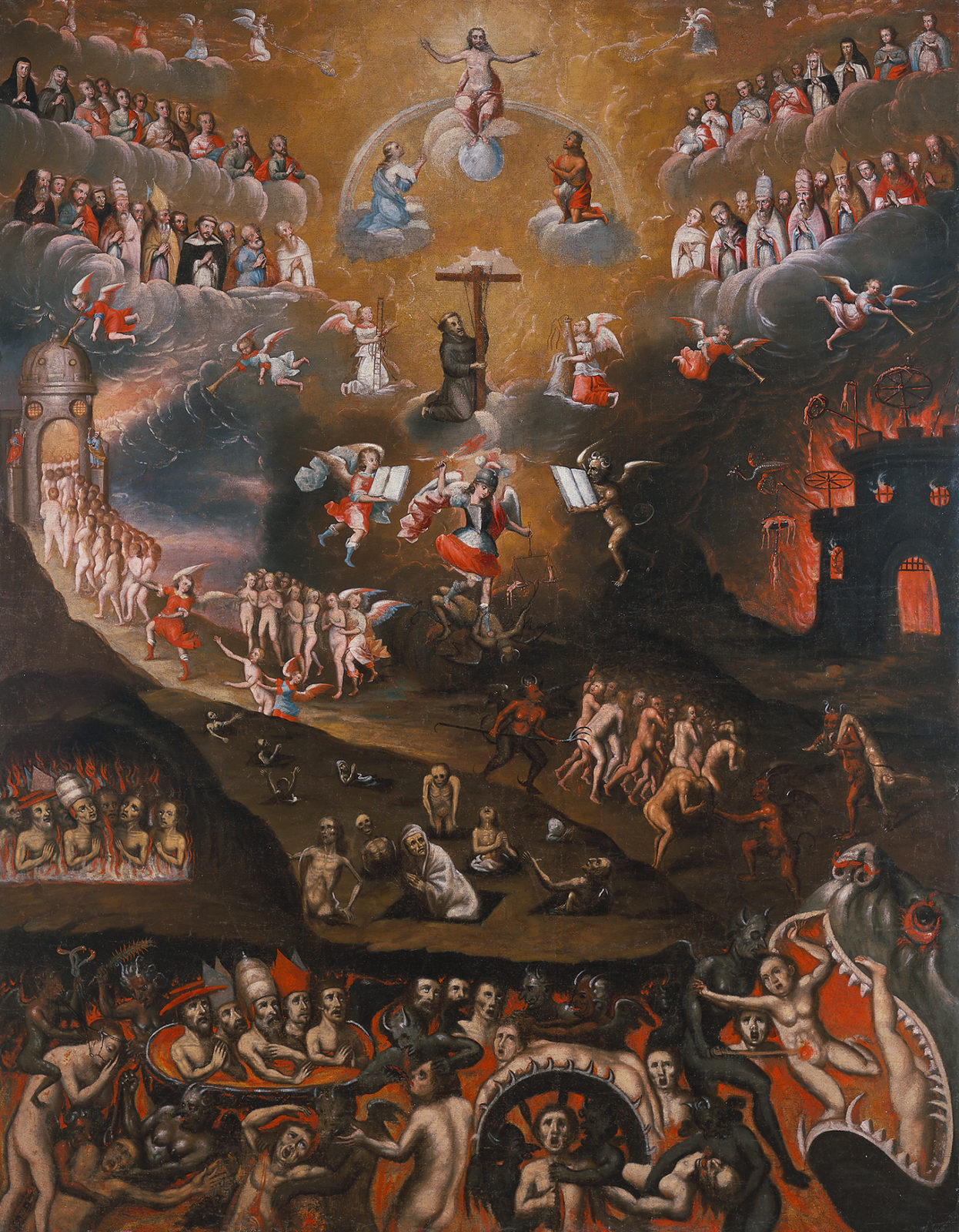
DANSE MACABRE — The Last Judgement Jan Van Eyck, 143040 Jan Van Eyck, Art Classique
About the work Jan van Eyck The Crucifixion; The Last Judgment, ca. 1440-1441 Oil on canvas, transferred from wood 22 1/4 × 7 2/3 in | 56.5 × 19.5 cm The Metropolitan Museum of Art New York Get notifications for similar works Want to sell a work by this artist? Sell with Artsy Artist Series Related artists

Jan Van Eyck The Crucifixion; The Last Judgment Stock Photo, Royalty Free Image 90448667 Alamy
The Last Judgment is part of a diptych (two paintings telling one story). It was created by Netherlandish artist Jan van Eyck with areas later completed by unidentified followers of his workshop. The Last Judgment and its accompanying depiction of The Crucifixion are renowned for its complex and highly detailed artwork. About the artwork

The Last Judgement by Hans Memling
Jan van Eyck ( / væn ˈaɪk / van EYEK, Dutch: [ˈjɑɱ vɑn ˈɛik]; c. before 1390 - 9 July 1441) was a painter active in Bruges who was one of the early innovators of what became known as Early Netherlandish painting, and one of the most significant representatives of Early Northern Renaissance art.

Altarpiece of the Last Judgement
February 19, 2019 Maryan Ainsworth, Curator Emerita, Department of European Paintings Jan van Eyck (Netherlandish, ca. 1390-1441) and Workshop Assistant. The Crucifixion; The Last Judgment, ca. 1440-41. Oil on canvas, transferred from wood, each: 22 1/4 x 7 2/3 in. (56.5 x 19.7 cm).

Jan van Eyck and Assistant The Crucifixion; The Last Judgment (33.92ab) Heilbrunn
The Crucifixion and Last Judgment, or the so-called New York Diptych, is one of the most controversial paintings attributed to Jan van Eyck (ca. 1390-1441) and his workshop. For well over a century, art historians have vigorously discussed its attribution, composition, functional intent, and even its dating.

Unlocking the Mysteries of Two Jan van Eyck Frames, Part Five Mysteries Unlocked The
Met curator Maryan W. Ainsworth on the sense of sound in Jan van Eyck's The Crucifixion; The Last Judgment, c. 1435-40. These exquisite paintings, juxtaposing Christ's sacrifice for the salvation of mankind with the Last Judgment, are by Jan van Eyck, the most celebrated painter of fifteenth-century Europe, and an assistant.

The Metropolitan Museum Turns Detective With Jan van Eyck The New York Times
The Crucifixion and Last Judgement diptych (or Diptych with Calvary and Last Judgement) consists of two small painted panels attributed to the Early Netherlandish artist Jan van Eyck, with areas finished by unidentified followers or members of his workshop.

[ E ] Jan van Eyck Last Judgement panel of the diptych (1420s) Detail (Jesus) Jan van eyck
Jan van Eyck's Crucifixion and Last Judgment: Solving a Conundrum € 125,00 EXCL. VAT ISBN: 978-2-503-59690-7 The aim is to rediscover Van Eyck's art—its facture, meaning, and function—within the context of its own time, and with particular regard to the circumstances of the commission. Renaissance painting Illumination & illustration of books

The Last Judgment Thoma Foundation
Jan van Eyck is the most famous member of a family of painters traditionally believed to have originated from the town of Maaseik, in the diocese of Liège. The work of the Van Eycks, epitomized in the Ghent Altarpiece, brought an unprecedented realism to the themes and figures of late medieval art.

The Last Judgment by Jan van Eyck and Assistant Flickr
The Crucifixion and Last Judgement diptych (or Diptych with Calvary and Last Judgement) consists of two small painted panels attributed to the Early Netherlandish artist Jan van Eyck. This diptych.

Pin on Hellfire, Death, & Damnation
The Crucifixion and the Last Judgment is an exquisite diptych attributed to the Early Netherlandish artist Jan van Eyck. This artwork was painted during the Northern Renaissance and belongs to the genre of religious paintings. In it, we find two small, painted panels filled with vivid imagery depicting some important elements of Christianity.
The Language of Looking The Crucifixion; The Last Judgment Jan van Eyck
Jan van Eyck painted the 'Crucifixion' and 'Last Judgment' panels, now on view at the Met in New York, at the end of his life - Washington Post (Fletcher Fund; The Metropolitan Museum of Art) Jan.

Magic Transistor on Tumblr The last judgment, Hans memling, Triptych
Perhaps the most remarkable part of the Crucifixion is the astonishing depth of the landscape behind the crosses. Van Eyck applied a splendid spatial perspective. A vertical axis is the key to the composition of the Last Judgment: Christ as judge at the top, and archangel Michael controlling the underworld. Next to Jesus are the virgin Mary and.

Last judgement (diptych panel)
This diptych features two beautifully constructed panel paintings, capturing The Crucifixion and Last Judgement. Jan van Eyck devoted much of his career to religious themes such as these, though also was highly skilled in portraiture as well as landscape scenes. We do know that Van Eyck would call upon the services of members of his studio in.

The Last Judgment by Jan van Eyck and Assistant Flickr
Date: 1430 Medium: Oil on wood transferred to canvas Dimensions: Height: 56.5 cm (22.2 ″); Width: 19.5 cm (7.6 ″) (each) Museum: Metropolitan Museum of Art - MET Jan van Eyck Name: Jan van Eyck Born: 1390 - Maaseik, present-day Belgium

Magic Transistor Jan van eyck, Art history, Baroque art
The Crucifixion; The Last Judgment Jan van Eyck ca. 1440-41 The Metropolitan Museum of Art New York City, United States Download this artwork (provided by The Metropolitan Museum of Art). Learn.